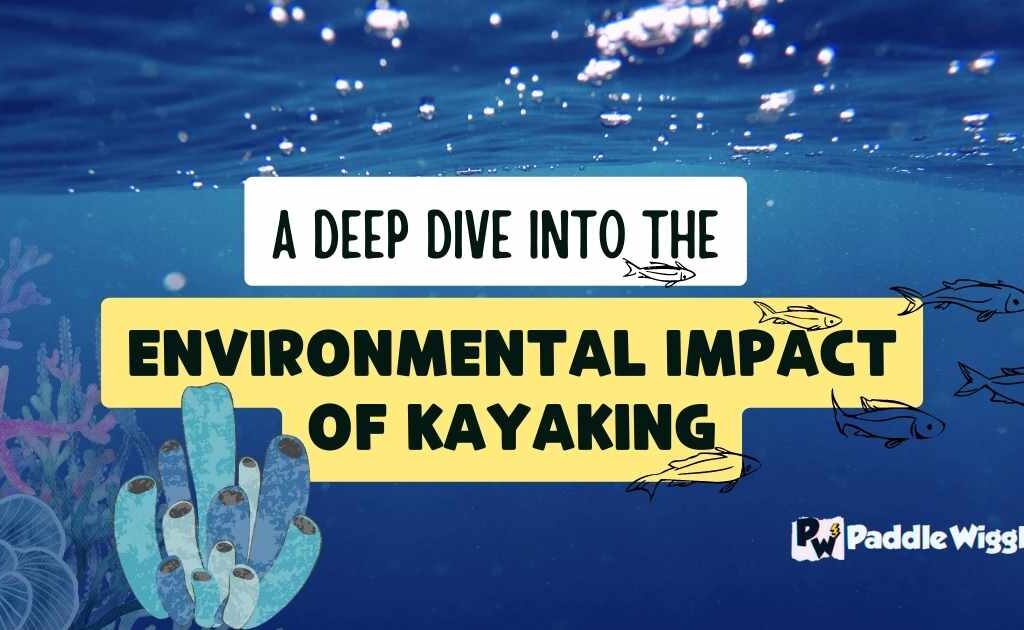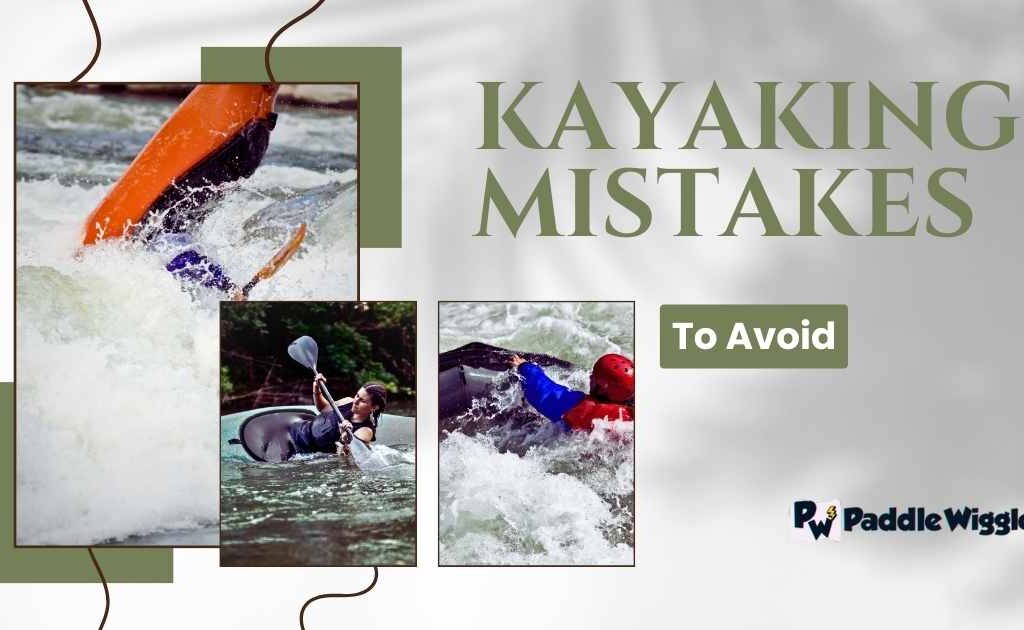Have you ever wondered how kayaks work and what makes them glide so smoothly on the water? It’s not just about how they look, but each of the parts of a kayak is meant for a specific adventure on the water.
Kayaks come in various shapes and sizes. Understanding the various components of a kayak can greatly enhance your paddling experience. Each part plays a vital role in ensuring a smooth and enjoyable ride, from the inside of the kayak to its hulls, deck, and cockpit.
This article aims to present a detailed analysis of the following:
- Accessing the basic parts of a kayak
- Exploring The Anatomy of Different Types of Kayaks
- Discussing The Additional Kayak Parts for Enhanced Performance
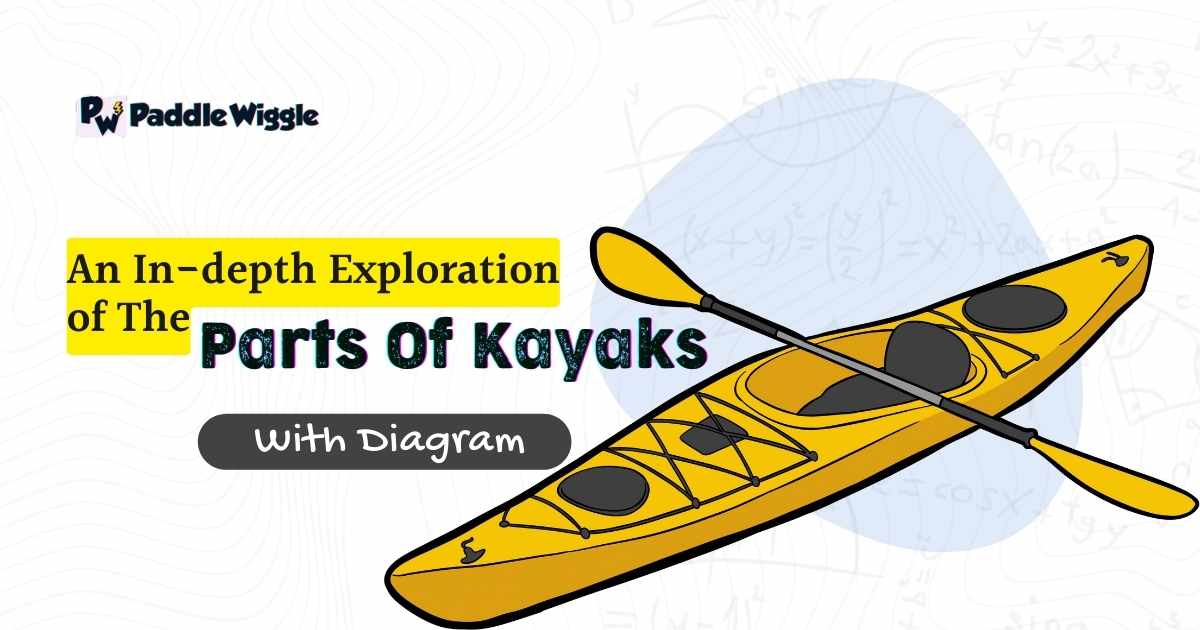

In this research
Understanding The Basic Parts Of A Kayak
In order to fully grasp the functionality and performance of a kayak, it is essential to have a thorough understanding of its various components. By familiarizing yourself with the basic parts of a kayak, you can make informed decisions when purchasing or using one.
The anatomy of a kayak consists of several key elements that contribute to its overall design and performance. These include the hull, deck, stern, keel, and seat. Each part serves a specific purpose and contributes to the kayak’s stability, maneuverability, and comfort.
The Hull: The Bottom Line
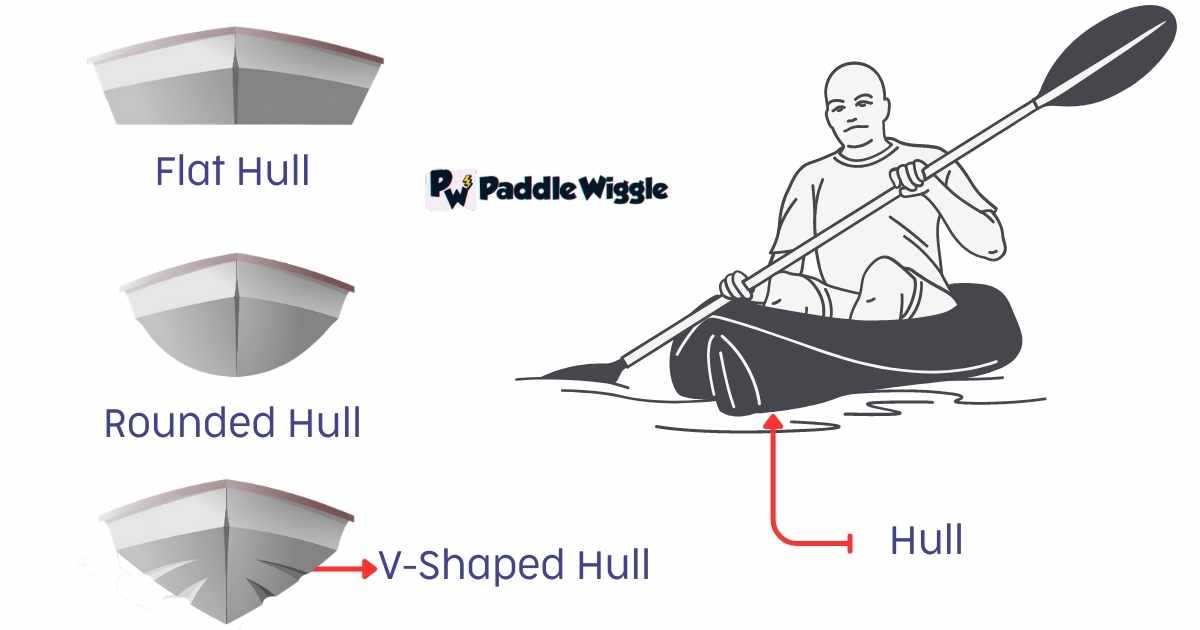

The hull is the foundation of a kayak, serving its main purpose – keeping you afloat! It refers to the bottom part of the kayak, which comes in different shapes and designs. Some kayaks have flat hulls, while others feature more pronounced curves. The shape of the hull greatly affects how your kayak performs in different water conditions.
Various types of hulls are available, each with unique characteristics. Let’s take a closer look at some of them:
- Flat Hull: This type of hull has a flat bottom surface and provides excellent stability. It is ideal for beginners or those who prefer calm waters such as lakes or slow-moving rivers.
- V-Shaped Hull: As the name suggests, this hull resembles a “V” shape when viewed from below. It offers better speed and maneuverability compared to flat hulls but sacrifices some stability.
- Rounded Hull: A rounded hull is designed for increased speed and agility. It allows for quick turns and maneuvers in rougher waters but may feel less stable than other types.
- Pontoon Hull: This type features two parallel pontoons on either side of the kayak’s centerline. It provides exceptional stability and buoyancy, making it suitable for fishing or recreational purposes.
The Deck: Where All the Action Happens
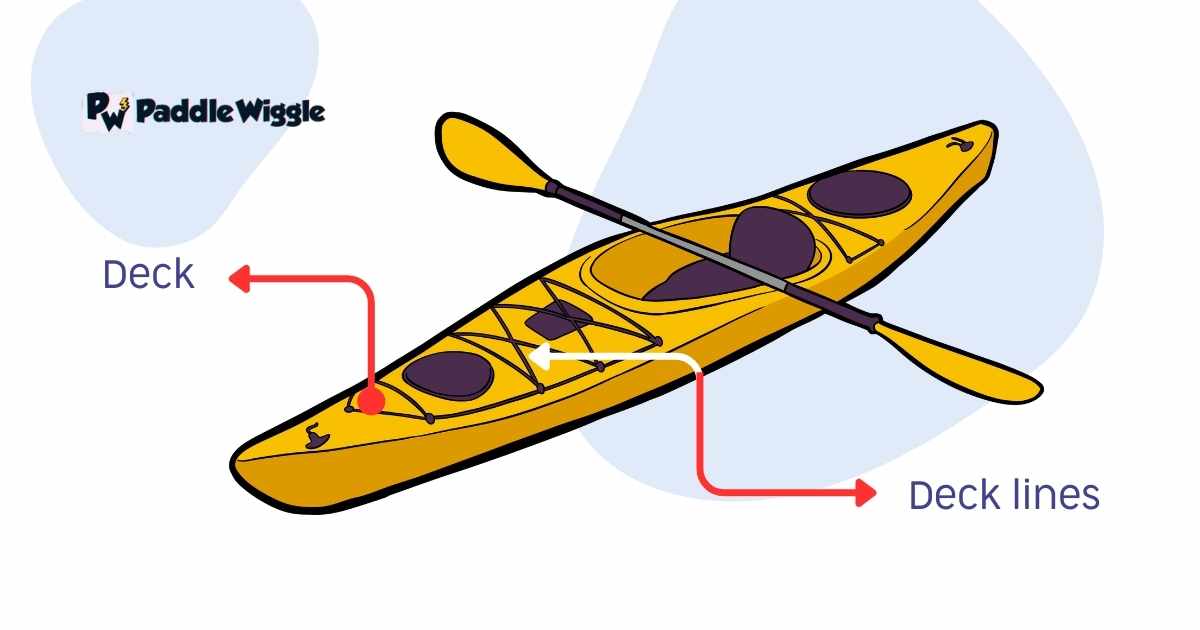

The deck is like the roof of your kayak. It forms the top part, enclosing the space where you sit or stand while paddling. In addition to providing structural integrity, it also acts as a shield against splashing waves and helps keep you dry. Many modern kayaks feature deck rigging systems that allow you to secure gear or accessories for easy access during your adventures.
Here are some common deck designs you may come across:
- Keyhole Deck: This design features an elongated cockpit area with narrower sides resembling a keyhole shape when viewed from above. Keyhole decks provide a snug fit, allowing for better control and maneuverability.
- Open Deck: An open deck has a larger cockpit area with more space to move around. It offers easier entry and exit from the kayak, making it suitable for recreational kayaking or those who prefer more freedom of movement.
- Sit-on-Top Deck: Unlike traditional kayaks, sit-on-top kayaks have an open deck with a molded seat on top. These kayaks are popular for their versatility and ease of use, as they allow paddlers to sit on the kayak rather than inside it.
Stern and Bow: Navigating Your Way
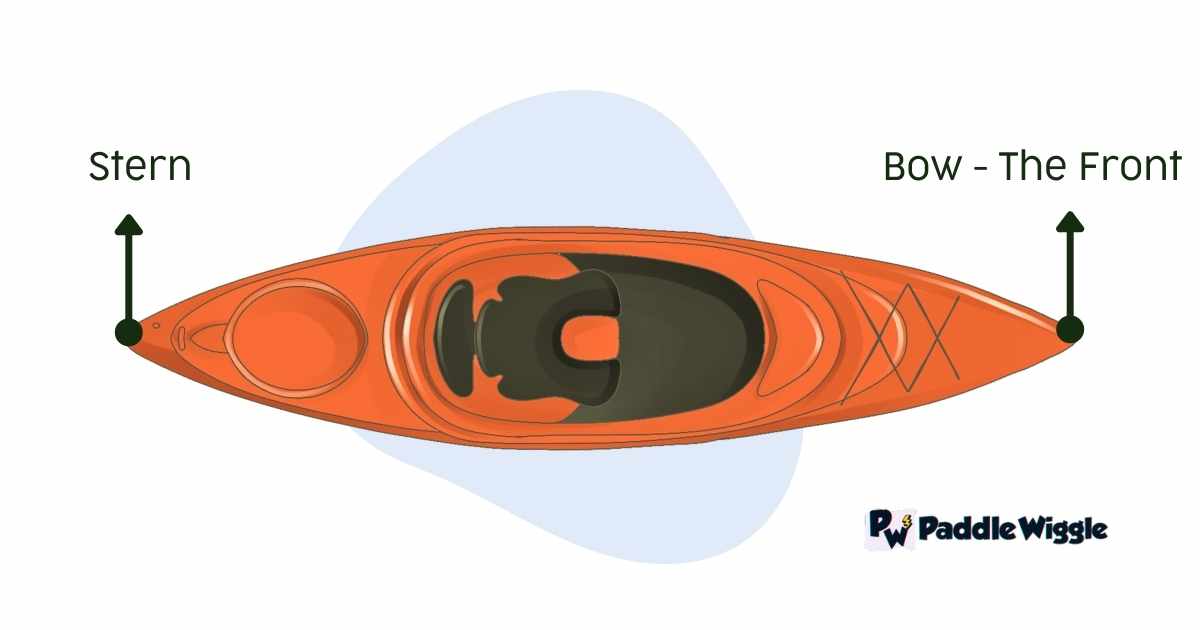

Understanding both ends of your kayak is crucial. The stern refers to the back end, while the bow represents the front. These terms are essential for navigation purposes and determining which direction you’re heading. Being able to identify these points will help you communicate with other paddlers effectively and navigate through tight spots with ease.
Here are some main types of stern shapes you may encounter:
- Square Stern: A square stern provides stability and tracking but sacrifices some maneuverability. This shape is commonly found in fishing kayaks or boats that require additional mounting options for accessories.
- Rounded Stern: A rounded stern allows for better maneuverability and turning capabilities. It is often found in whitewater kayaks or kayaks designed for quick navigation through narrow passages.
- Tapered Stern: A tapered stern combines elements of both square and rounded designs. It offers a balance between stability, tracking, and maneuverability, making it suitable for various water conditions.
Keel: Keeping You On Track
The keel runs along the centerline of your kayak’s hull from bow to stern. It plays a vital role in maintaining stability and tracking straight when paddling on open water. Depending on its design, it can be either flat or rounded. A flat keel provides more stability, while a rounded one enhances maneuverability. Understanding the characteristics of your kayak’s keel will help you make the most of your paddling experience.
Here are some key points to consider about keels:
- Keel Line: The keel line refers to the shape or profile of the keel. A more pronounced keel line provides better tracking, while a flatter keel line allows for increased maneuverability.
- Types of Keels: There are different types of keels, including retractable skegs and fixed fins. Retractable skegs can be lowered or raised depending on the water conditions, offering flexibility in tracking control.
Seat: Finding Your Comfort Zone
The seat is where you’ll spend most of your time while kayaking, so finding the right level of comfort is essential. Some kayaks come with molded seats, while others have adjustable ones that allow you to customize your position. A comfortable seat ensures better posture and reduces fatigue during long trips, enabling you to enjoy your time on the water fully.
Exploring the Anatomy of Different Types of Kayaks
Delving into the world of kayaking, one quickly realizes that not all kayaks are created equal. Each type of kayak is designed with specific uses in mind and, therefore, comes with its unique structural characteristics. In this section, we’ll compare the structural differences between various kayak types and examine how kayak anatomy modifications cater to specific uses like fishing, touring, and surfing.
Structural Differences Between Various Types of Kayaks
Kayaks come in a variety of types, each designed to cater to specific paddling environments and activities. These diverse kayak types exhibit unique structural differences that directly influence their performance, stability, and maneuverability on the water.
Parts Of A whitewater kayak
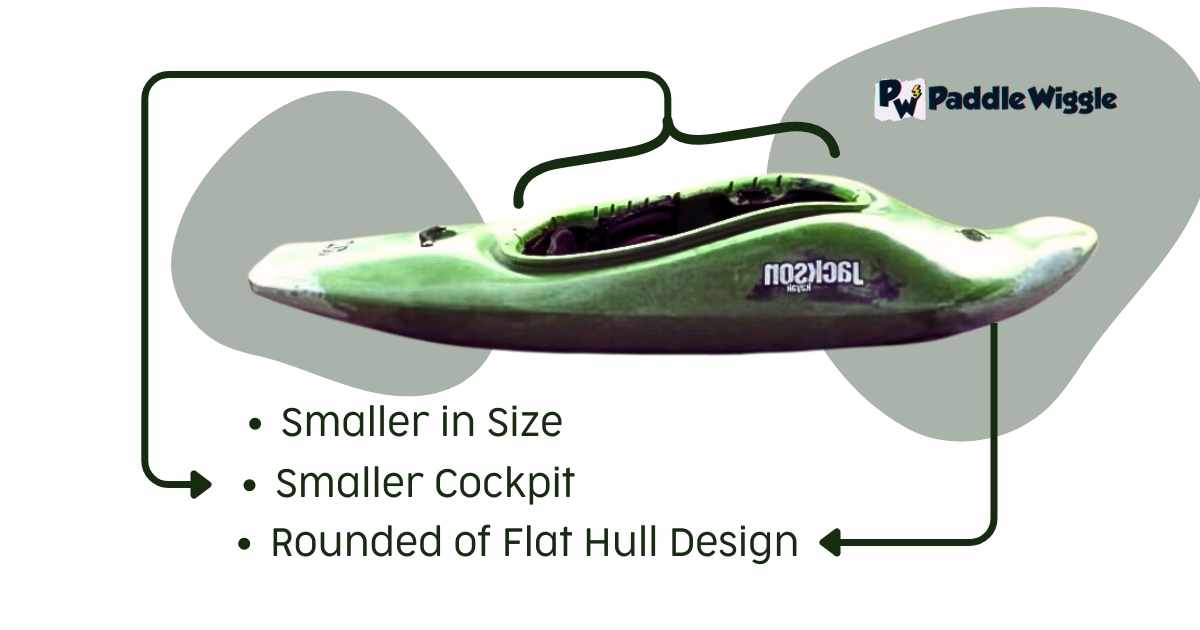

Whitewater kayaking is an exhilarating and challenging sport requiring specialized equipment to navigate rough waters and turbulent rapids. To ensure enhanced performance, whitewater kayaks are equipped with unique features designed specifically for this purpose.
One crucial component found in whitewater kayaks is the thigh braces. These adjustable pads provide stability and control by allowing the paddler to brace their thighs against the kayak’s sides. This feature enables precise maneuverability, especially when executing quick turns or bracing against powerful currents.
Another essential part of a whitewater kayak is its rails. Rails are small ridges located along the bottom of the kayak that help maintain stability in turbulent waters. They provide additional grip and prevent the kayak from tipping over easily, allowing paddlers to navigate through rapids confidently.
Whitewater kayaks often come equipped with multiple water plugs strategically placed throughout the hull. These plugs allow water that enters the cockpit during intense maneuvers to drain out quickly, preventing excessive weight buildup and keeping the kayak buoyant.
Parts of A Recreational Kayak
On the other hand, recreational kayaks have a larger cockpit for easy entry and exit and are generally wider for increased stability. This makes them ideal for beginners or those who plan on paddling calm waters. Touring kayaks, built for longer journeys on open water, tend to be longer and narrower for efficient paddling over distances. They often feature bulkheads for floatation and storage compartments for gear.
Anatomy of A Surf Kayak
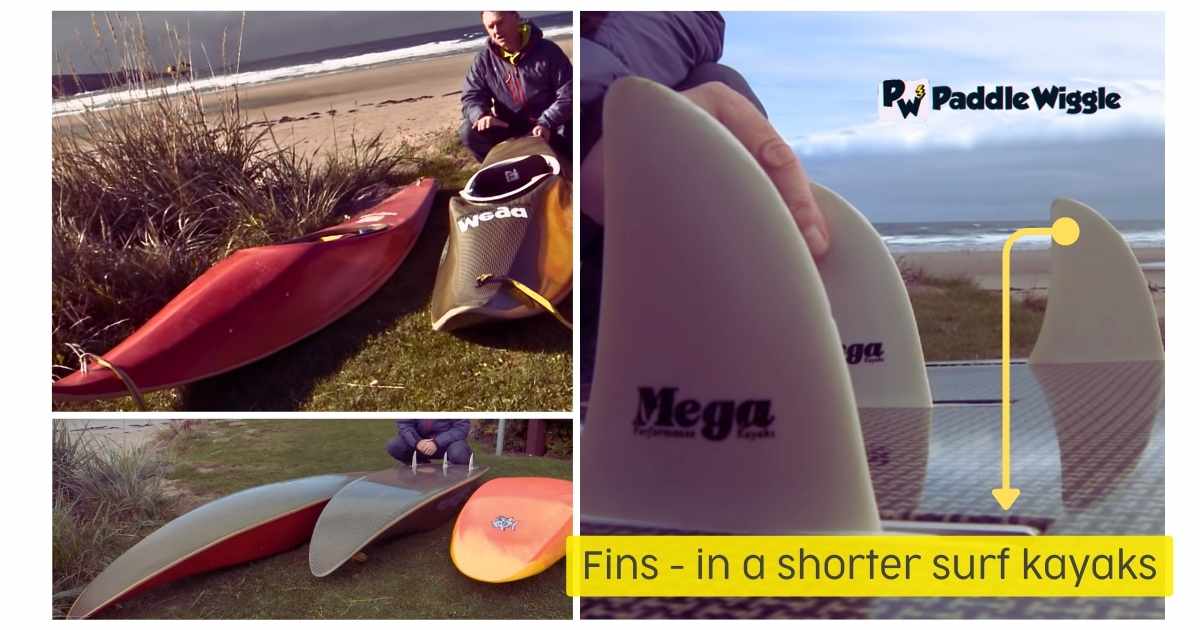

Surf kayaks, designed for wave riding, are typically short with a flat bottom and hard rails to carve turns on waves. They often have a fin setup similar to surfboards. Sea kayaks, built for open water and ocean kayaking, are longer and slimmer for speed and often come with rudders or skegs for improved tracking in wind and waves. The bow and stern may also have sealed hatches for storing equipment during multi-day trips.
Parts of A Touring Kayak/Sea Kayak
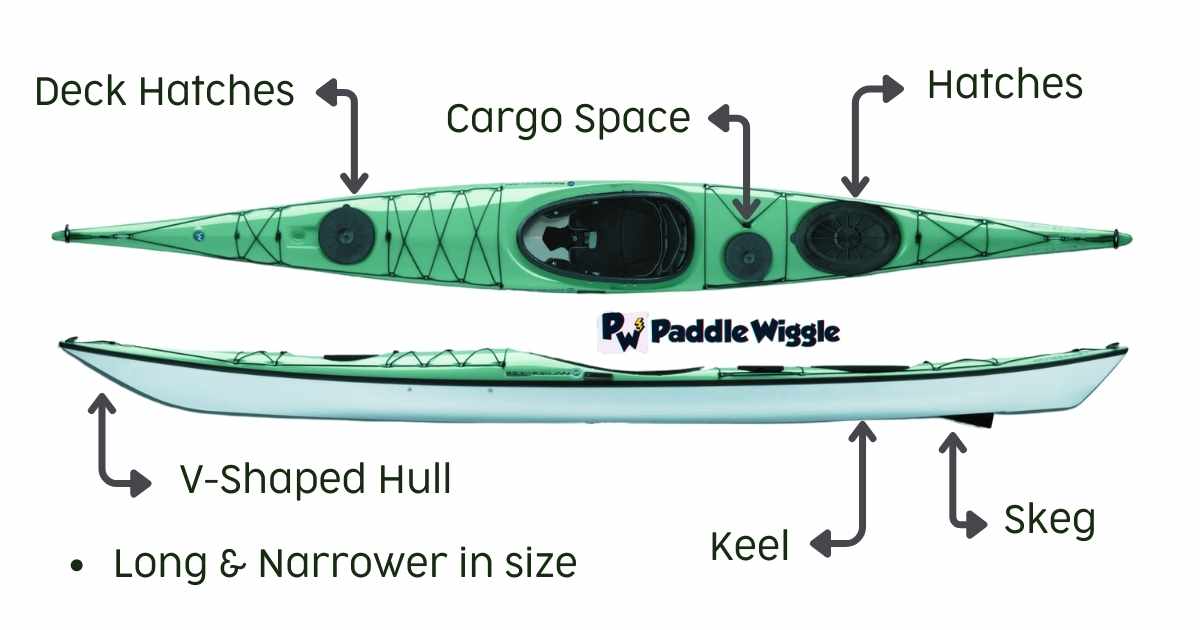

Touring kayaks are designed for long-distance journeys and extended trips, requiring ample storage space to carry essential gear and supplies. These versatile vessels offer various storage options to accommodate the needs of adventurous paddlers exploring vast waterways.
One common storage feature in touring kayaks is a spacious rear hatch. Located at the stern, this large compartment provides easy access to securely store camping equipment, food supplies, or personal belongings. The rear hatch is typically watertight, ensuring that valuable items remain dry even in wet conditions.
Touring kayaks often include bungee deck rigging on the bow and stern. These elastic cords crisscrossed over the kayak’s deck create a flexible system for securing additional gear such as dry bags or extra paddle floats. This setup allows paddlers to easily access frequently used items while keeping them within reach during their journey.
Moreover, some touring kayaks are equipped with built-in bulkheads. These internal walls divide the kayak’s interior into separate compartments, providing added buoyancy and safety by preventing water from flooding the entire vessel if one section becomes compromised. Bulkheads also serve as additional storage areas for organizing gear efficiently.
Anatomy Of A Racing Kayak
Racing kayaks are built for speed and efficiency, prioritizing streamlined design elements that minimize drag while maximizing propulsion. These sleek vessels incorporate various components to optimize performance on flatwater courses or in competitive races.
One key feature of racing kayaks is their narrow hull design. The slim profile reduces resistance against the water, allowing paddlers to glide effortlessly through each stroke. This streamlined shape also enhances maneuverability, enabling quick turns without sacrificing speed.
To further enhance speed, racing kayaks often feature a displacement hull. This specialized hull shape displaces water efficiently as the kayak moves forward, minimizing turbulence and reducing drag. The result is a smoother and faster ride that allows paddlers to reach impressive velocities.
Differentiating Sit-On-Top and Sit-Inside Kayak Parts
The anatomy of a kayak can vary significantly based on its intended use. Sit-on-top kayaks, for example, typically have a sealed hull and molded-in seat, making them perfect for leisure paddling and fishing. They often come with additional features like rod holders and gear mounts, catering specifically to the needs of anglers.
Scupper Holes
Sit-on-top kayaks are equipped with scupper holes, which are small openings in the kayak’s hull. These holes serve a specific purpose – allowing water to drain from the kayak. Scupper holes are particularly useful in sit-on-top kayaks because these kayaks do not have a cockpit that can be sealed off from the water. When water splashes into the kayak or if it rains, it can flow through the scupper holes and exit the kayak, keeping the paddler dry.
On the other hand, sit-inside kayaks do not have scupper holes. These kayaks have a sealed cockpit, which means that water cannot enter the kayak easily. The absence of scupper holes in sit-inside kayaks ensures that the paddler stays dry and the kayak remains buoyant even in rough water conditions.
Bulkhead
One of the key features found in sit-inside kayaks is a bulkhead. A bulkhead is a partition that separates the cockpit from the rest of the kayak’s interior. It is typically made of a watertight material, such as foam or plastic. The main purpose of a bulkhead is to create a sealed compartment within the kayak. This compartment provides additional buoyancy and helps prevent the kayak from sinking in the event of a capsize. The bulkhead also serves as a storage area, allowing paddlers to keep their gear and equipment secure and dry.
Sit-on-top kayaks, on the other hand, do not have a bulkhead. Since these kayaks have an open design, there is no need for a sealed compartment. Instead, sit-on-top kayaks often have storage wells or tank wells located at the stern or bow of the kayak. These open storage areas can be used to secure gear, coolers, or other items that the paddler wants to bring along on their adventure.
Footwell
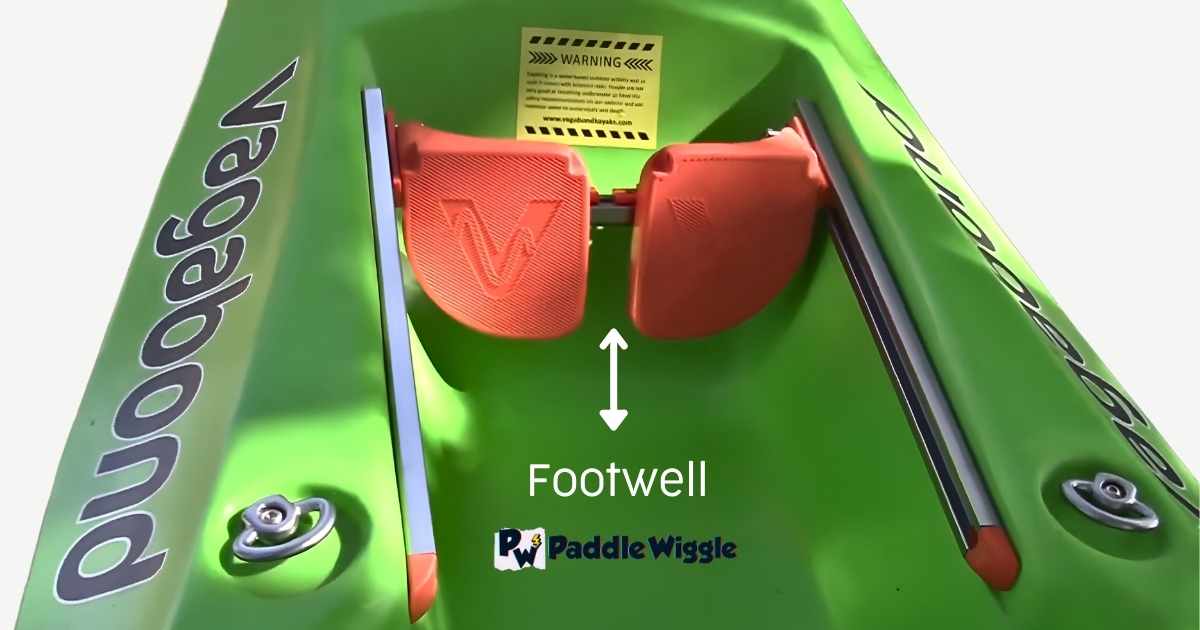

Sit-on-top kayaks feature a footwell, which is an open area where the paddler’s feet rest. The footwell is designed to provide comfort and stability while paddling. It allows the paddler to have a relaxed and natural position for their feet, reducing fatigue and improving overall control of the kayak. The footwell also provides ample space for the paddler to stretch their legs and adjust their seating position as needed.
In contrast, sit-inside kayaks do not have a dedicated footwell. Instead, the paddler’s feet are positioned inside the cockpit area. The foot space in a sit-inside kayak is usually more confined compared to a sit-on-top kayak. However, sit-inside kayaks often have adjustable foot braces or pegs that can be used to customize the foot position and provide additional support and control while paddling.
Coaming
Sit-inside kayaks are equipped with a coaming, which is a raised rim or lip around the cockpit opening. The coaming serves several purposes. It helps to keep water out of the cockpit, preventing it from splashing in during rough conditions. The coaming also provides a secure attachment point for a spray skirt, which is a protective cover that can be worn by the paddler to keep water out of the cockpit. Additionally, the coaming can be used to attach accessories such as fishing rod holders or navigation equipment.
In contrast, sit-on-top kayaks do not have a coaming. Since these kayaks have an open design, there is no need for a raised rim around them.
Anatomy Of A Fishing Kayak
Fishing kayaks are specially designed to cater to the needs of angling enthusiasts. These kayaks come equipped with unique components that enhance the fishing experience and make it more convenient for fishermen. Some models might also include a pedal drive system, allowing anglers to maintain their position while keeping their hands free for casting and reeling.
Let’s explore some of these additional parts found in fishing kayaks.
Rod Holders
The rod holder is one of the most essential features of a fishing kayak. These holders allow you to secure your fishing rods while you paddle or wait for a bite. They come in various designs, including flush-mounted holders, adjustable holders, and even specialized ones for specific fishing rods. Having multiple rod holders on your kayak can provide convenience and allow you to fish with multiple rods simultaneously.
Pedal Drive System
A pedal drive system is a game-changer for fishing kayaks. This innovative feature allows you to propel your kayak using your legs, freeing up your hands for fishing. With a pedal drive system, you can easily cover more water efficiently and maneuver in tight spaces. It provides a hands-free experience, giving you better control and stability while casting or reeling in your catch.
Bungee Cords
Bungee cords are elastic with hooks or clips used to secure your gear on the kayak. These cords are essential for keeping your equipment, such as coolers, tackle boxes, or dry bags, in place during fishing trips. They provide a simple and effective way to secure your belongings, ensuring they don’t slide or fall off the kayak while you’re on the move.
Tackle Storage Systems
Fishing requires a variety of tackle, including lures, hooks, lines, and more. A fishing kayak with dedicated tackle storage systems makes organizing and accessing your gear easy. These storage compartments can be built-in or removable, offering different configurations to accommodate your specific needs. A well-designed tackle storage system ensures your tackle is easily accessible and protected from water damage.
Fish Measuring Ruler
Catching fish is undoubtedly a thrilling experience, and if you’re planning to keep your catch, a fish measuring ruler is a handy tool. Many fishing kayaks come equipped with a built-in fish measuring ruler, typically located on the kayak’s surface or inside a hatch. This ruler allows you to quickly measure the length of your catch, ensuring it meets legal size limits or personal preferences.
Additional Kayak Parts for Enhanced Performance
Additional kayak parts that can significantly impact a kayak’s performance, stability, and maneuverability. Rudder or skegs, different seats, and navigation aids all contribute to an improved kayaking experience.
Grab Handles and Hatches
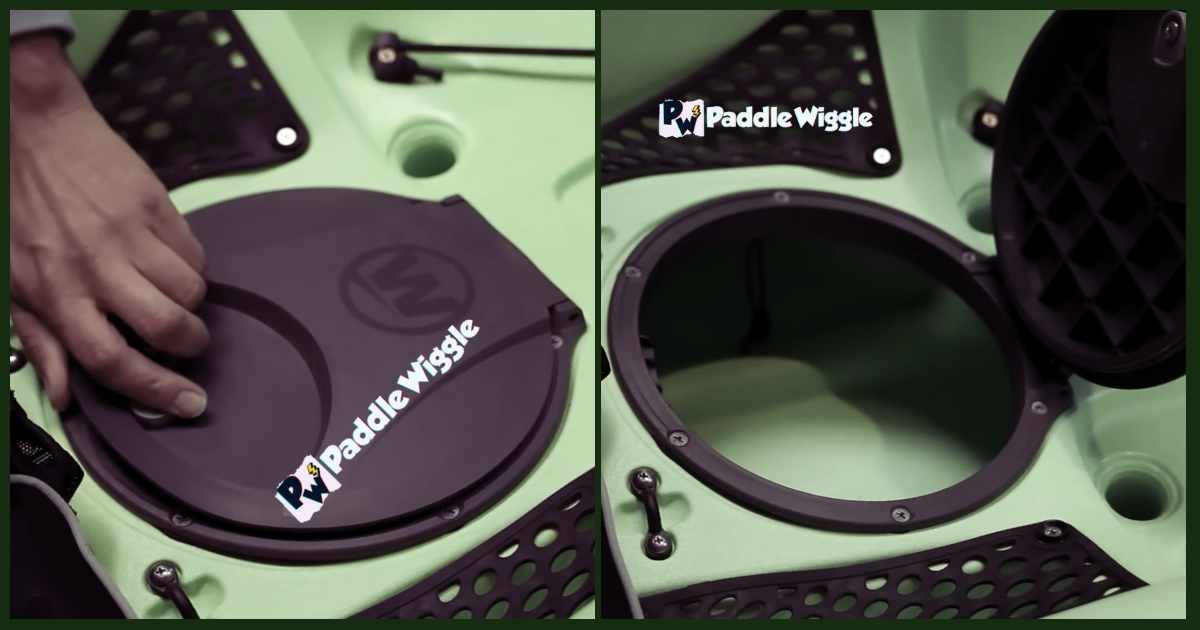

Grab handles at the bow and stern of the kayak are essential for carrying the vessel in and out of the water. They also prove useful in case of capsizing, providing a grip to right the kayak or hold onto it while waiting for rescue.
Last but not least, hatches are storage compartments in a kayak. They can be found in the sea and touring kayaks and are typically sealed with a waterproof cover to protect belongings and supplies from getting wet.
These parts’ intricate design and thoughtful placement significantly contribute to the overall kayaking experience. They enhance comfort and control and ensure safety, making every paddling adventure more enjoyable and worry-free.
The Rudder/Skeg
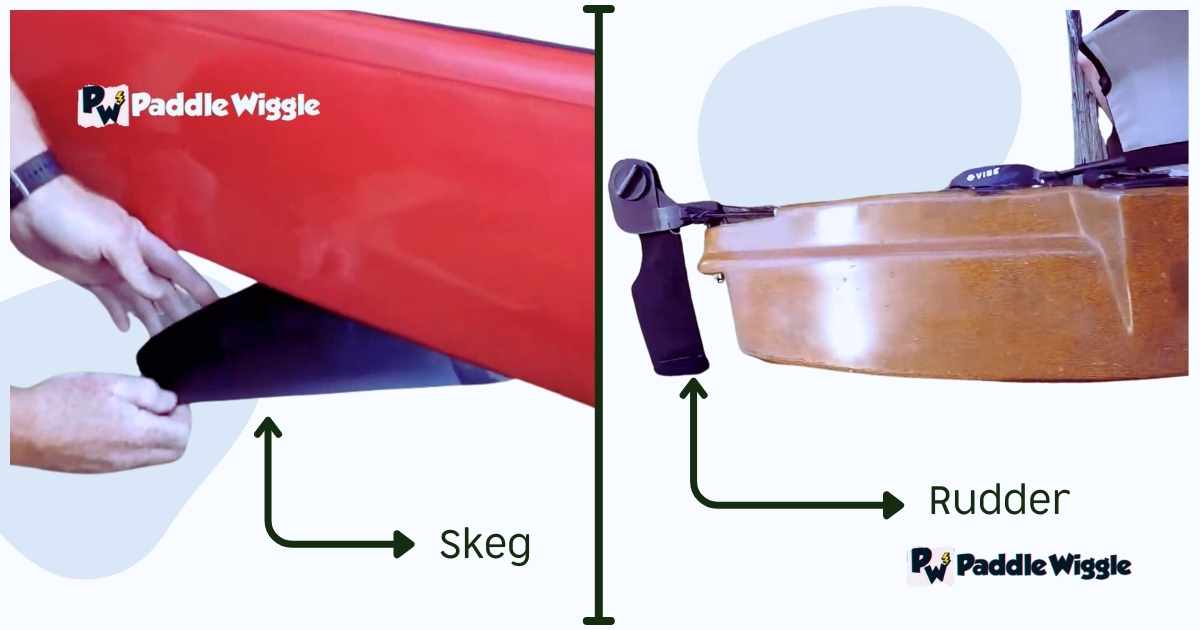

Moving on, let’s discuss the rudder or skeg. Primarily used for steering, a rudder is a blade that extends from the stern and is controlled using foot pedals. On the other hand, a non-movable skeg that drops down from the hull helps keep the kayak on a straight path, particularly in windy conditions.
Spray Skirt
The spray skirt is key in keeping the paddler dry, especially in rough waters. This protective cover fits around the cockpit and the waist of the paddler, preventing water from entering the kayak. It is an essential part of sea and whitewater kayaks.
Kayak Seats
Kayak seats play a crucial role in ensuring the comfort and well-being of paddlers. A well-designed seat provides better support for the lower back and promotes proper paddling posture, whereas an inadequate seat can lead to discomfort, soreness, and even potential injuries.
Basic kayak seats are the standard option found in most entry-level recreational kayaks. They are typically made of lightweight foam and provide a simple, no-frills seating solution. While these seats are functional for short paddling trips, they may lack the support and padding for extended use. These seats are best suited for occasional or leisurely paddlers who prioritize simplicity and cost-effectiveness.
Although there are a few other types of kayak seats available for particular adventures:
- High-Back Seats
- Adjustable Backrest Seats
- Kayak Fishing Seats
- Deluxe Padded Seats
Kayak Sail Kits
For those seeking an extra thrill, kayak sail kits can be a valuable addition. These kits allow paddlers to harness the wind’s power, propelling the kayak forward with less physical effort.
Compasses and GPS Units
Navigation aids like compasses and GPS units are essential for longer trips or sea kayaking. These devices help paddlers stay on course and accurately determine their position, ensuring a safe and enjoyable journey.
Summary
- Kayaks come in various types, each designed for specific paddling environments and activities.
- Recreational kayaks feature wide and stable hulls, suitable for casual paddlers on calm waters.
- Touring kayaks have longer, narrower hulls, optimizing speed and efficiency for longer journeys.
- Sea kayaks are specialized for open water and rough conditions, with additional safety features and storage options.
- Whitewater kayaks have compact, highly maneuverable designs with pronounced rockers for navigating rapids.
- Sit-on-top kayaks offer stability and versatility, popular for recreational use and fishing.
- Comfortable kayak seats with proper back support prevent fatigue and promote good posture.
- Additional kayak parts, such as rudder systems, skegs, and kayak sails, can enhance performance and control.
- Understanding kayak structure and design aids in choosing the right kayak for specific paddling preferences.
Discussion And Conclusion
Understanding the basic parts of a kayak is crucial for anyone looking to purchase or use one effectively. And if you know how each component contributes to its overall performance, you can make informed decisions and choose the right kayak for your needs.
Acknowledgment
Finally, I want to express my sincere gratitude to Addison Marveric [@addison] for his valuable contributions to this research. His expertise and passion for kayaking were instrumental in shaping the content.

